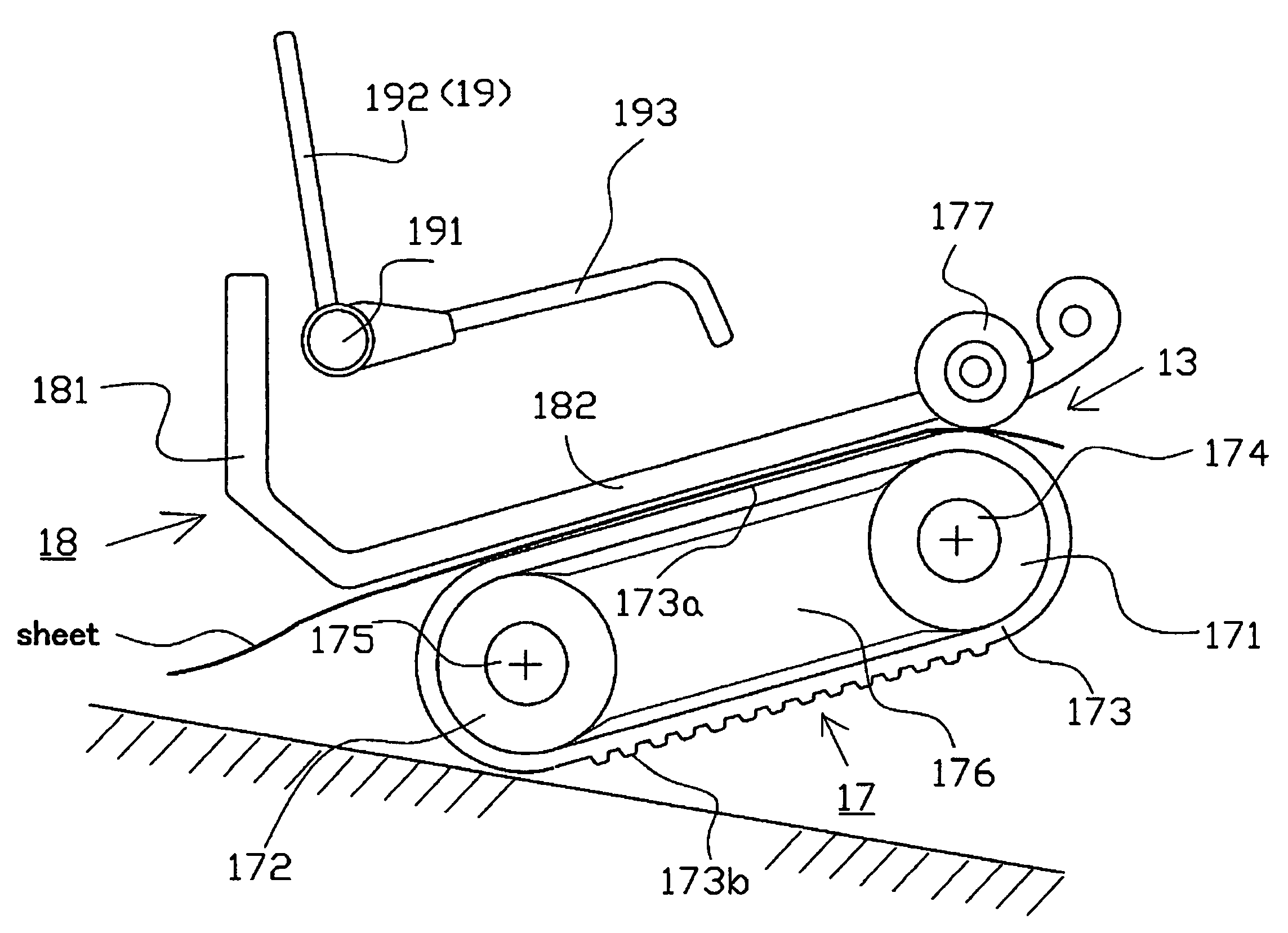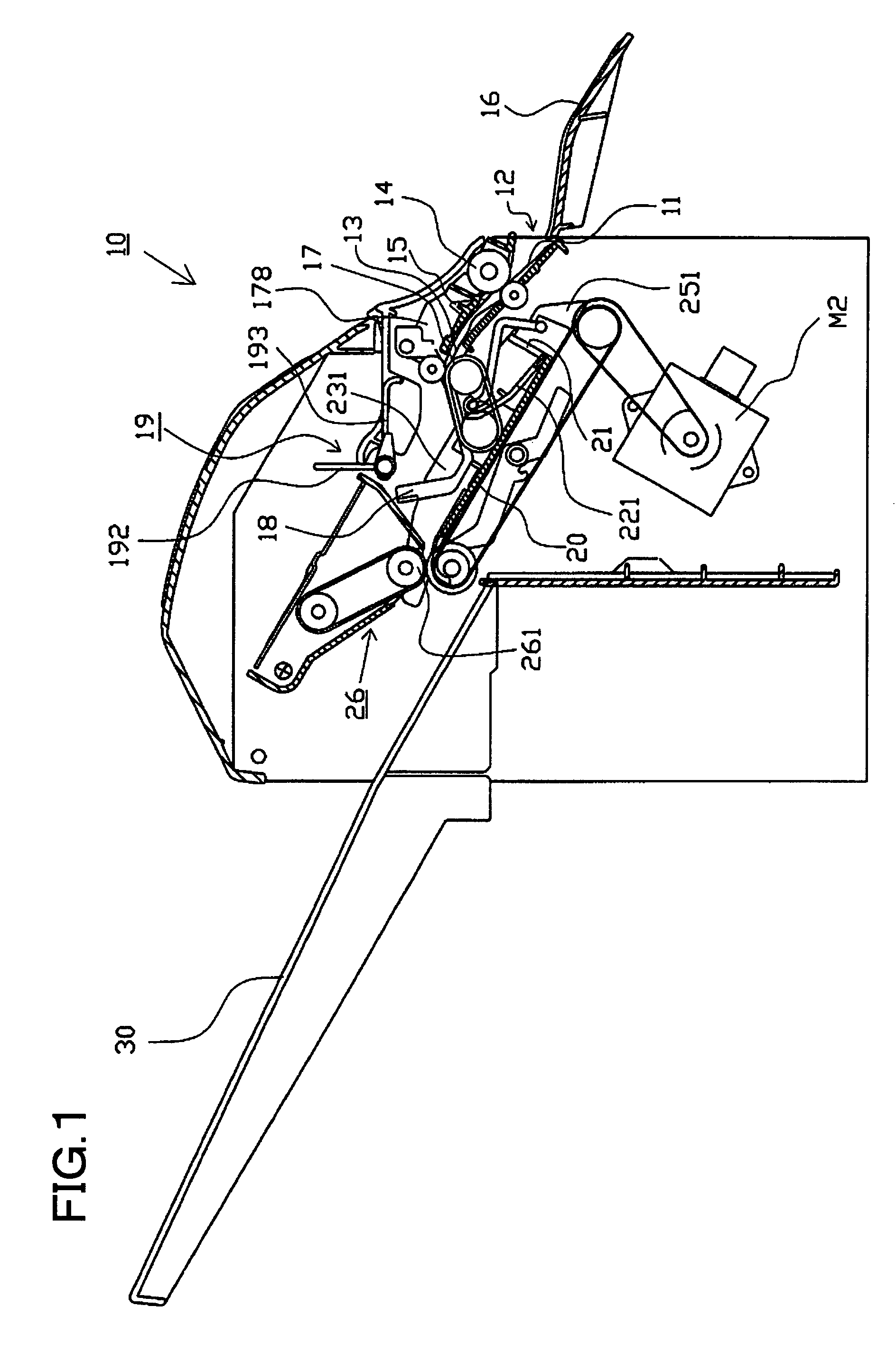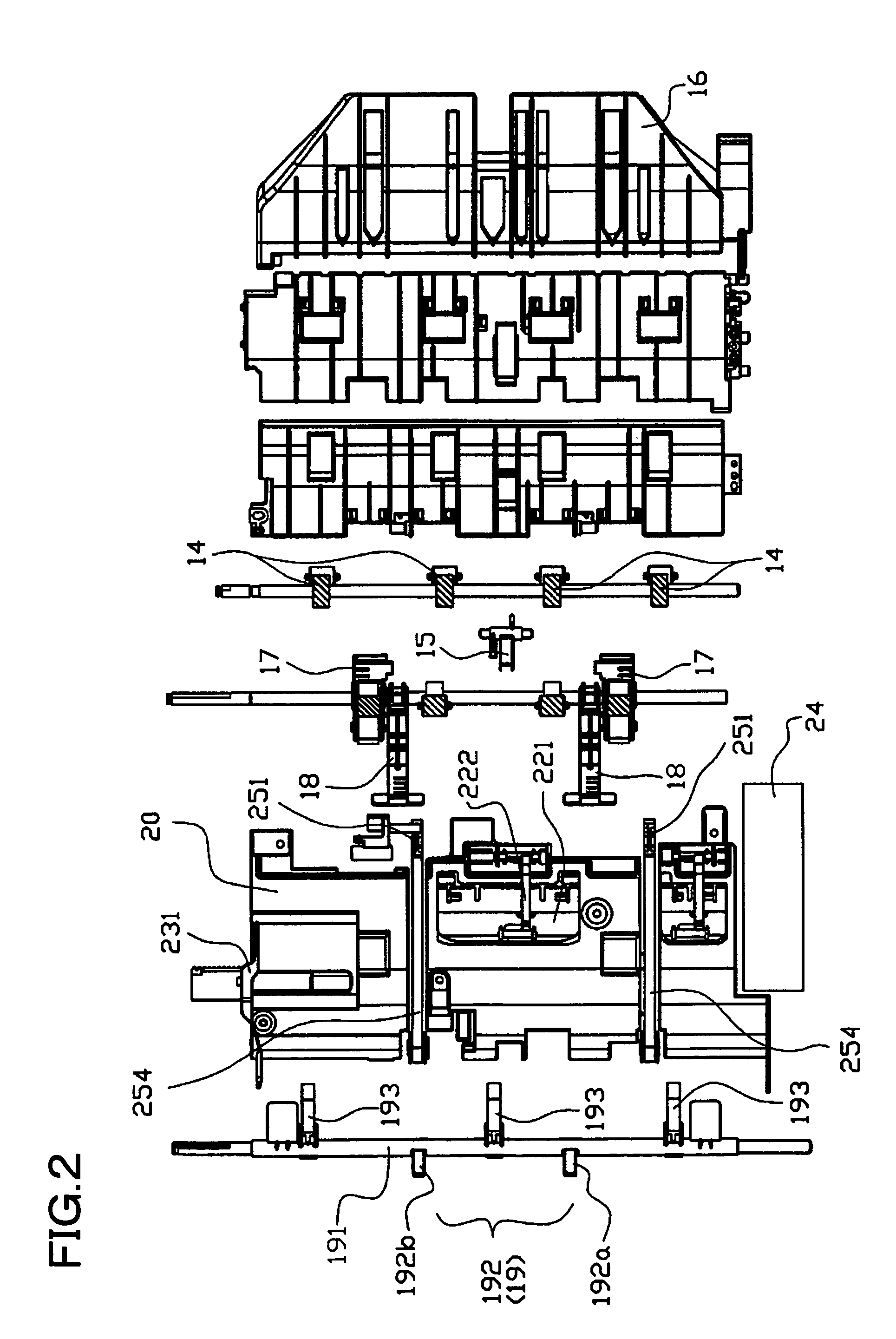Sheet discharging device and sheet postprocess apparatus using the same
a discharging device and postprocessing technology, applied in the direction of thin material handling, printing, article delivery, etc., can solve the problems of difficult setting stable conveyance conditions for a wide variety of sheets, difficult to convey, and more likely to curdle sheets at high temperature, so as to reduce the pressing force of pressing force, increase the pressing force to convey the sheet, and facilitate the effect of driving
- Summary
- Abstract
- Description
- Claims
- Application Information
AI Technical Summary
Benefits of technology
Problems solved by technology
Method used
Image
Examples
Embodiment Construction
[0030]The present invention will be described below on the basis of an illustrated embodiment. FIG. 1 shows a postprocess apparatus in accordance with the present invention which executes a postprocess such as sheet binding on printed sheets (hereinafter referred to as sheets) formed using an image forming apparatus. Description will be given below of the postprocess apparatus to which the present invention is applied.
Image Forming System
[0031]The postprocess apparatus in accordance with the present invention is connected to a sheet discharging port in the image forming apparatus (not shown in the drawings) to sequentially receive sheets on which images have been formed. The postprocess apparatus then executes a “sheet binding process,” a “jog process,” and a “sheet conveying process” on the received sheets. The image forming system is composed of an image forming apparatus main body comprising a copier, a print function, and a facsimile function, and the postprocess apparatus, conn...
PUM
 Login to View More
Login to View More Abstract
Description
Claims
Application Information
 Login to View More
Login to View More - R&D
- Intellectual Property
- Life Sciences
- Materials
- Tech Scout
- Unparalleled Data Quality
- Higher Quality Content
- 60% Fewer Hallucinations
Browse by: Latest US Patents, China's latest patents, Technical Efficacy Thesaurus, Application Domain, Technology Topic, Popular Technical Reports.
© 2025 PatSnap. All rights reserved.Legal|Privacy policy|Modern Slavery Act Transparency Statement|Sitemap|About US| Contact US: help@patsnap.com



